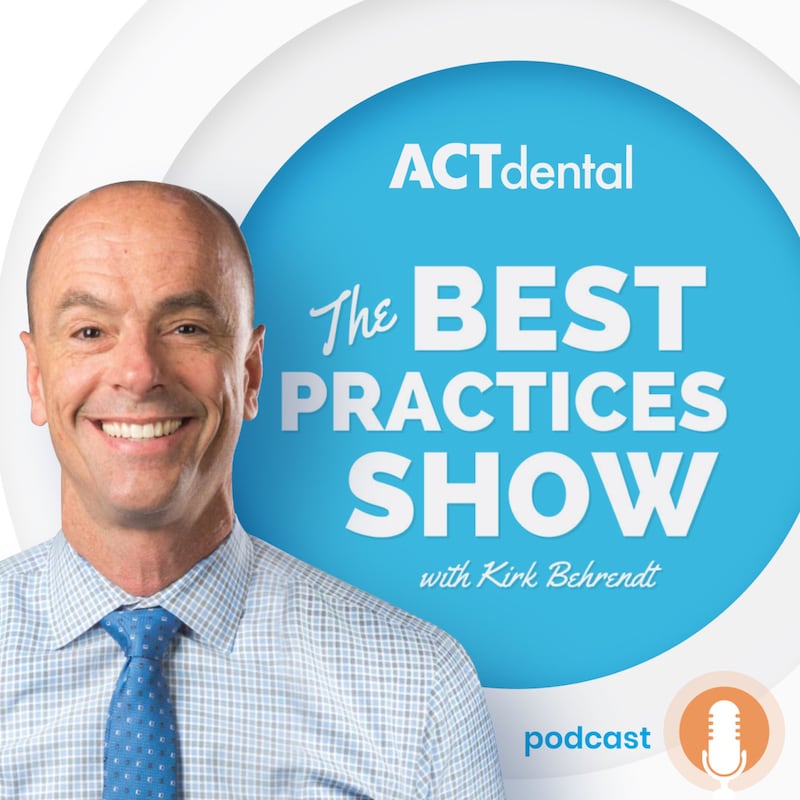What is the best solution for missing teeth? It depends on several key factors! In this episode of Clinical Edge Fridays, Dr. Dennis Hartlieb, CEO and co-founder of Dental Online Training, simplifies this complicated topic using some of his greatest case examples. With the proper techniques and assessments, you can achieve life-changing outcomes for patients that are esthetically and functionally successful. To learn how to choose the best treatment option for each unique case, listen to Episode 873 of The Best Practices Show!
Learn More About Dr. Hartlieb:
More Helpful Links for a Better Practice & a Better Life:
Episode Resources:
Main Takeaways:
- Determine whether restorative replacement or canine substitution is appropriate.
- Understand the three treatment options for congenitally missing lateral incisors.
- Dental implants are great — but be aware of potential complications.
- Be aware of various challenges for both the clinician and patients.
- Missing lateral incisors is almost never a single-tooth issue.
Snippets:
0:00 Introduction.
3:45 Dr. Hartlieb’s background.
8:51 Setting patients’ expectations.
17:50 More about Dr. Hartlieb and Dental Online Training.
23:05 Two options for congenitally missing lateral incisors.
25:25 Missing teeth, explained.
26:04 How common is hypodontia?
29:00 Fixed treatment options for congenitally missing lateral incisors.
29:25 Tooth autotransplantation, explained.
30:26 Case example: 13-year-old, autotransplantation.
38:42 Case example: 17-year-old, dental implants.
45:12 Case example: 19-year-old, dental implants.
47:46 Case example: Older patient.
50:11 Case example: Indirect resin-bonded bridges.
54:56 Q&A: The rule of no distal cantilever on a posterior.
56:53 Case example: Direct resin-bonded bridge (Ribbond bridge).
59:38 Case example: Canine substitution.
1:06:25 Challenges: Patient/parent expectations.
1:06:53 Challenges: Tooth size, shape, and positioning.
1:13:09 Important measurements to know.
1:16:02 Challenges: Altered passive eruption.
1:21:05 Short clinical crown versus altered passive eruption.
1:22:50 Things to consider for canine substitution.
1:24:46 Case example: Canine substitution, minimal treatment.
1:27:02 Case example: Canine substitution, collaborative treatment.
1:30:00 Case example: Canine substitution, 16-year-old.
1:35:08 About Dental Online Training.
1:36:40 Q&A: How to handle composite chipping.
1:41:03 Hands-on example.
1:59:28 Q&A: Dr. Hartlieb’s composite veneer fees.
2:02:17 Final thoughts.
Dr. Dennis Hartlieb Bio:
Dr. Dennis Hartlieb is a graduate of the University of Michigan School of Dentistry and maintains a full-time practice committed to cosmetic and restorative dentistry in the Chicago suburb of Glenview, Illinois. He is an instructor at the Center for Esthetic Excellence in Chicago and is formerly an Adjunct Associate Professor at the Marquette University School of Dentistry in Milwaukee, Wisconsin.
Dr. Hartlieb is an accredited member of the American Academy of Cosmetic Dentistry (AACD), a member of the American Academy of Esthetic Dentistry (AAED), the American Academy of Restorative Dentistry (AARD), the American Dental Association, the American College of Dentists, and the American Academy of Dental Sleep Medicine. He is the founder of Dental Online Training (DOT), an online hands-on training program for dentists, dental auxiliaries, and dental students. Dr. Hartlieb is also an examiner for the AACD accreditation process.




